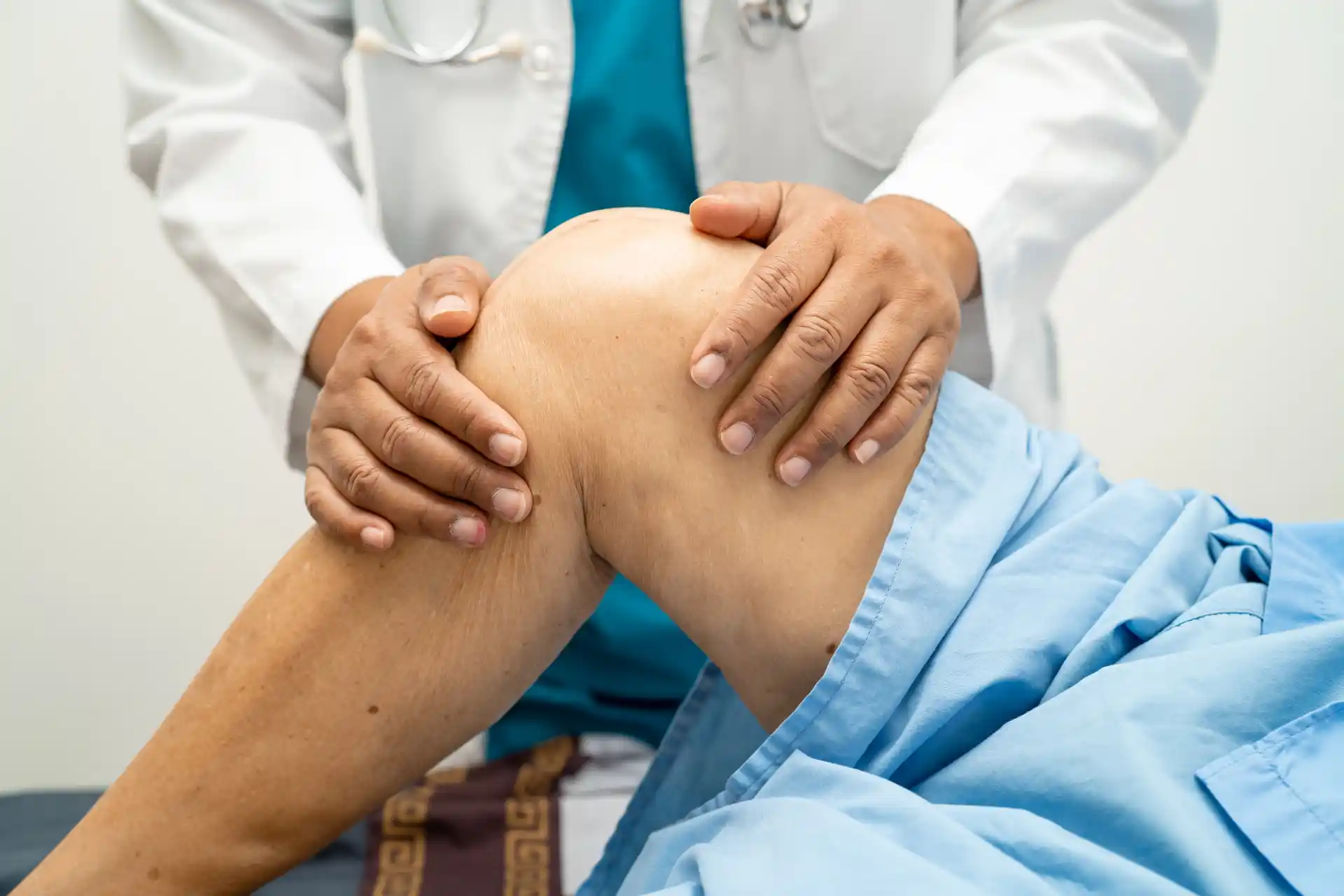If you have experienced shingles, or if you have a loved one who has, you might already know how disruptive the painful rash can be.
Furthermore, up to 1 or 2 out of every 10 people who get shingles develop lasting pain from postherpetic neuralgia. This condition, often called PHN, persists long after the visible rash clears.
PHN is considered a type of nerve pain that can linger for months, even years. The good news is that researchers are learning more about ways to treat and possibly prevent this challenging condition.
Below, you will find key information on why PHN happens, how it is diagnosed, and which treatment options might help you feel more comfortable.
Understanding Postherpetic Neuralgia
Postherpetic neuralgia arises from the same virus that causes chickenpox, known as the varicella-zoster virus. After you recover from chickenpox, the virus remains in your body, hidden in nerve cells.
Years later, it can reactivate in the form of shingles, causing a blistering rash.
In some cases, this reactivation damages your nerves to the point where they continue to send strong pain signals, even after the rash itself has disappeared.
- People over 50 tend to be more prone to PHN because the immune system weakens with age.
- Pain often centers in the same place where the shingles rash was.
Why It Matters
Lasting nerve pain can disrupt your normal routine, making it hard to focus on work, sleep comfortably, or even enjoy everyday activities.
You might find that light touches on your skin become extremely painful, or you experience sharp, sudden twinges that come and go.
Since this pain can persist for months or years, it is important to address it and explore options for relief early on.
How It Relates To Neuropathy
Postherpetic neuralgia is one form of peripheral neuropathy, a broad term for damage to your peripheral nerves.
If you are curious about other examples, you can learn more in our dedicated resource on peripheral neuropathy.
Even though PHN has a unique cause (the varicella-zoster virus), it shares many features with other nerve-related conditions such as diabetic neuropathy or nerve pain from other triggers.
To learn more about other conditions can be triggered by nerve dysfunction, read up on pinched neck nerve, carpal tunnel syndrome, and sciatic nerve pain.
Symptoms, Diagnosis, And Risk Factors
The main symptom of PHN is lingering pain where your shingles outbreak occurred. Here is a closer look at factors that raise your risk, possible symptoms, and ways a provider may diagnose you.
Main Symptoms You Might Notice
- Persistent burning or aching pain that lasts at least three months after a shingles rash clears
- Sensitivity to touch (even clothes on your skin can hurt)
- Sharp, jabbing sensations or pins-and-needles discomfort
- Itching or numbness in the affected area
Symptoms like numbness or tingling can also appear in your hands, feet, or other parts of the body.
If you notice these sensations in your lower extremities, feel free to explore numbness in feet or tingling in hands and feet for more information.
Diagnosing PHN
A straightforward physical exam typically reveals whether your nerve pathways are oversensitive in a certain spot. Providers often run gentle tests, such as lightly touching the skin, to see how your nerves respond.
Most of the time, no additional lab work or imaging is required (Mayo Clinic).
Occasionally, doctors may order a nerve conduction study if they suspect other underlying nerve issues. This test measures electrical signals in your nerves to gauge function and pinpoint damage.
Key Risk Factors
- Age: If you are over 50, your chance of developing PHN rises significantly.
- Shingles Severity: A large or painful rash might increase your odds of lingering nerve pain.
- Immune Function: Conditions like diabetes or a weakened immune system can put you at higher risk (NHS).
- Pain Threshold: Individuals who experience severe acute pain during the shingles outbreak are more likely to develop PHN.
Taking preventive steps and seeking timely care can make a difference in how you feel long-term.
Treatment And Management Options
Finding relief from postherpetic neuralgia often requires a combination of therapies. Because damaged nerves continue to send strong pain signals to your brain, calming those nerves is a central priority.
Here are some common medical interventions, along with additional care approaches you might consider to improve everyday comfort.
Medical Therapies
Health care providers commonly prescribe the following treatments (Cleveland Clinic):
Anticonvulsants
- Examples include gabapentin and pregabalin
- These medications help calm irritated nerves and lessen the intensity of pain
Antidepressants
- Drugs like certain tricyclic antidepressants are used to interrupt pain signals
Topical Treatments
- Lidocaine patches or capsaicin patches applied directly to the skin
- These numb or desensitize the nerve endings in the painful area
Opioid Painkillers
- Tramadol and oxycodone may be prescribed cautiously for severe PHN
- Because of the risk of addiction, the CDC advises regular checkups and the lowest possible dose (Mayo Clinic).
Steroid Injections
- In selected cases, steroid shots near the spinal nerves can reduce inflammation
If you have questions about how these medications might interact with your lifestyle, it is best to discuss them with your doctor. Therapy often requires careful dose adjustments and regular monitoring.
Seek RELIEF®
RELIEF® is a science-backed treatment that targets dysfunctional fascia, which may contribute to nerve irritation and peripheral neuropathy.
Using a gentle technique called hydrodissection, RELIEF® releases adhered fascia and soft tissue that can press on nerves—helping reduce tingling, burning, numbness, and pain associated with peripheral neuropathy.1-7
RELIEF® is a minimally invasive alternative to traditional treatments and does not require steroids, long-term medication, surgery, anesthesia, or post-procedure immobilization.
Emerging Research
Newer drugs, including AT2R antagonists and voltage-gated calcium channel inhibitors have shown promise for PHN in clinical trials (NCBI). While these treatments are still in development, they may expand your options for relief if standard therapies fall short.
Lifestyle And Supportive Measures
Besides prescription medications, small day-to-day strategies may help relieve discomfort:
- Wear loose, soft clothing to lessen irritation on sensitive skin.
- Spice up your environment with gentle stretching exercises (approved by your provider) to maintain range of motion.
- Practice mindfulness or controlled breathing to help distract from nerve pain flare-ups. Some people also find relief through gentle massage therapies.
- Try a warm (not hot) compress to soothe the area, but check with your health care provider first.
If you want more details on broader therapy approaches, our resource on neuropathy treatment can offer insights. By learning about various options, you stand a better chance of finding what works best for you.
Prevention And Next Steps
While postherpetic neuralgia can appear without warning, especially in older adults, you can take important preventive measures. The effort you put into avoiding or taming shingles in the first place often pays off when it comes to stopping long-term nerve pain.
Shingles Vaccine
Getting vaccinated is the number one way to lower your chances of developing both shingles and PHN. The vaccine is available for individuals over 50, and it has been shown to reduce the incidence of shingles.
By preventing shingles entirely, you reduce the risk of lingering pain down the road (Cleveland Clinic).
Early Treatment For Shingles
If you suspect you have shingles (especially with a new rash or consistent burning pain), see your provider right away.
Earlier antiviral treatment might reduce the severity of the outbreak and help protect your nerves from excess damage. This can, in turn, lower the odds of PHN.
Plan Your Next Steps
Speak With Your Doctor
- Request a thorough evaluation, especially if your pain from shingles lasts longer than you expected.
Consider A Combined Approach
- Ask about anticonvulsants, topical patches, and possibly low-strength opioids if you have severe flare-ups.
- Remember that multiple therapies often work better than one single treatment.
Keep A Pain Journal
- Jot down patterns you notice: Does the pain spike if you skip meals or at certain times of day? By tracking triggers, you can more effectively discuss them with your provider.
Staying positive can feel hard, but small steps can bring big improvements. Many people find their PHN symptoms fade slowly over time.
Talk with your provider about any of the approaches outlined here, set a plan that fits your life, and remind yourself you are not alone in seeking relief.
If you’re in the Miami area and seeking relief from peripheral neuropathy, contact us today to schedule a consultation.

.jpg)




.svg)